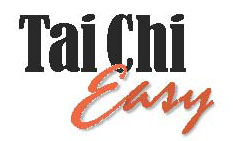Tai Chi (Taiji)© by Dr. Roger Jahnke
The roots of Tai Chi go deep into Chinese history. Tai Chi was originally
a martial arts practice called T'ai Chi Chuan (Taijiquan). Chuan (Quan)
means fist or boxing. The art has a legendary beginning in the philosophy
of Daoism (Taoism). Its origin comes as a part of the history of Zhang,
Zhan-feng (Chang San-feng) who was highly enlightened, which allowed him
the title of Immortal. Some argue that Zhang was mythic, others that he
was historic.
He discovered the T'ai Chi Chuan in a dream and proved its value by killing
a hundred bandits in the Wu Dan Mountains in Hubei Province. Tai Chi Chuan
combines the martial skill of Immortal Zhang and his devotion to the deepest
principles of Daoism (Taoism).
Tai Chi has evolved in three directions. Due to its rich heritage in
Daoist spirituality, it is a method for spiritual growth. Due to its profound
utility as a fighting art it has become the martial art of choice for
many serious fighters. In the middle and common to both is Tai Chi's powerful
application as a self-healing tool.
In Chinese tradition there are thousands of methods and practices for
self healing generally called Qigong (Ch'i Kung). Tai Chi is one category
of Qigong forms. Tai Chi consists generally of 108 separate movements
that are connected together into a specific order. There are several kinds
of Tai Chi including: Yang Style, Chen Style, Wu Style and others. Most
of these forms of Tai Chi have created a short form, between 20 and 40
movements, that allows for beginners to learn more quickly, elders to
have an abbreviated practice and patients who are ill to practice without
too much to learn.
The practice triggers health and healing benefits from both the Asian
paradigm of energy and the Western paradigm of physiology. The balance
and flow of one's internal self healing energies is enhanced by the slow,
intentful, meditative movements of Tai Chi. At the very same time the
delivery of oxygen and nutrition from the blood to the tissues is improved.
The lymph system's ability to eliminate metabolic byproducts and transport
immune cells is increased. The biochemical profile of the brain and nervous
system is shifted toward recovery and healing.
During the Cultural Revolution in the 1960's, a very dark time in Chinese
history, all forms of Qigong that were intellectually or spiritually based
became crimes against the "people". Most forms of Tai Chi were
outlawed as well. After this era certain aspects of China's ancient tradition
were recovered. For a short period of time Tai Chi was the only "party
certified" system of health enhancement, usually Yang Style Tai Chi.
As it became clear that many forms of Qigong were beneficial to people's
health, the various forms of Tai Chi reemerged. Now in China literally
millions of citizens practice Tai Chi every day; some singularly, some
in groups numbering into the hundreds, some with swords, some with large
red fans.
Because of the widespread popularity of the Tai Chi concept outside of
China, it is typical for people to think of Tai Chi when thinking of self
healing practices from China. However, it is important to remember that
there are many self-healing practices from the Chinese tradition.
There is a lengthy learning process associated with most forms of Tai
Chi. It may be advisable for some people to explore a number of the more
simple Qigong forms, particularly those who are extremely busy, older
or dealing with illness.
|
